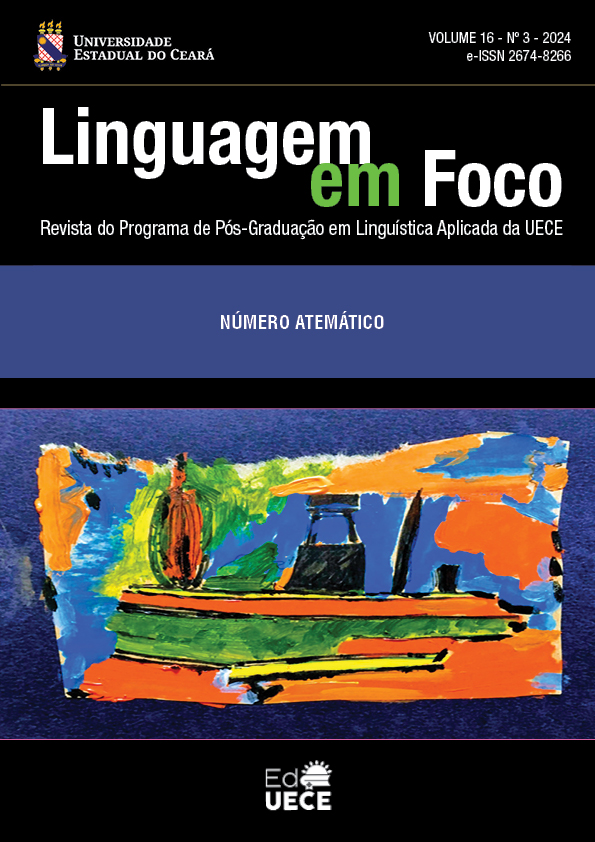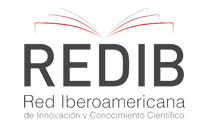Reinterpretação semântica de verbos preposicionados à luz do princípio funcionalista da iconicidade
DOI:
https://doi.org/10.46230/lef.v16i3.13923Resumen
Neste trabalho, apresenta-se uma análise do uso dos verbos assistir, obedecer e responder em textos escritos por universitários a partir de um objetivo: explicar o movimento contrário ao uso normativo da preposição a diante dos complementos desses verbos. Partimos da hipótese de que ocorre uma associação semântica marcada entre forma e função linguística nos textos escritos. Para tanto, apoiamo-nos no referencial teórico funcionalista de vertente norte-americana (Givón, 2001; Oliveira; Votre, 2009), sobretudo no princípio da iconicidade, bem como em gramáticas normativas (Cunha; Cintra, 2001; Bechara, 2005) e descritivas (Perini, 2005; Bagno, 2012). Segundo as gramáticas normativas, os três verbos supracitados funcionam como transitivos indiretos, indicando a necessidade de preposição. Contudo, o arcabouço teórico funcionalista aponta para um caminho no qual a gramática não constitui um conjunto fixo de regras, mas maleável e moldado pelo uso da língua nas situações comunicativas. Para este estudo, os dados foram extraídos da página eletrônica do evento “Semana Integrada de Inovação, Ensino, Pesquisa e Extensão”, da Universidade Federal de Pelotas; um corpus destinado à divulgação de trabalhos acadêmicos. Resultados encontrados apontam para a ausência de preposição diante dos complementos dos três verbos nos textos dos estudantes do ensino superior. Essas ocorrências parecem atestar, a partir de princípios funcionalistas, como o da iconicidade, uma reinterpretação da regência dos verbos analisados, marcada pela relação entre forma (queda de preposição) e função (reinterpretação dos verbos com outros verbos).
Descargas
Citas
BAGNO, M. Gramática pedagógica do português brasileiro. São Paulo: Parábola Editorial, 2012.
BAGNO, M. Português ou Brasileiro? Um convite à pesquisa. São Paulo: Parábola Editorial, 2001.
BECHARA, E. Moderna gramática portuguesa. 37. ed. Rio de Janeiro: Lucerna, 2005.
BRAGA, M. L. Processos de redução: o caso das orações de gerúndio. In: KOCH, I.G.V. (Org.). Gramática do Português falado. Campinas/São Paulo: Editora da Unicamp/Fapesp, 1996, p.231-51.
BRASIL. Ministério da Educação. Secretaria da Educação Básica. Base nacional comum curricular. Brasília, DF, 2018. Disponível em: < http://basenacionalcomum.mec.gov.br/images/BNCC_EI_EF_110518_versaofinal_site.pdf>. Acesso em: dez. 2023.
CUNHA, C.; CINTRA, L. Nova gramática do português contemporâneo. Rio de Janeiro: Nova Fronteira, 2001.
DUBOIS, J. The discourse basis of ergativity. Language, v. 63, n. 4, p. 805-855, 1987.
FURTADO DA CUNHA, M. A.; TAVARES, M. A. Funcionalismo e ensino de gramática. 1. ed. Natal: EDUFRN, 2016.
GIVÓN, T. Funcionalism and grammar. Amsterdam: John Benjamins Publishing Company, 1995.
GIVÓN, T. Syntax: an introduction. Amsterdam: John Benjamins Publishing Company, 2001.
LUFT, C. P. Dicionário prático de regência verbal. 9. ed. São Paulo: Ática, 2010.
LUFT, C. P. Gramática Resumida. 2. ed. Porto Alegre: Globo, 1971.
NEVES, M. H. de M. Gramática de Usos do Português. São Paulo: Unesp, 1999.
OLIVEIRA, M. R. de; VOTRE, S. J. A trajetória das concepções de discurso e de gramática na perspectiva funcionalista. Matraga - Revista do Programa de Pós-Graduação em Letras da UERJ, v. 16, n. 24, p. 97-114, jun. 2009.
PERINI, M. A. Gramática descritiva do português. 4. ed. São Paulo: Ática, 2005.
TRAVAGLIA, L. C. Gramática: ensino plural. São Paulo: Cortez, 2003.
VOTRE, S. J.; NARO, A. Emergência da sintaxe como um fenômeno discursivo. In: NARO et al (Org.). Relatório final de pesquisa: Projeto subsídios do Projeto Censo à educação. Rio de Janeiro: UFRJ, 1986.
Descargas
Publicado
Cómo citar
Número
Sección
Licencia
Derechos de autor 2025 Gabriel Zardo, Tatiana Schwochow Pimpão

Esta obra está bajo una licencia internacional Creative Commons Atribución 4.0.
Os autores que publicam na Linguagem em Foco concordam com os seguintes termos:
- Os autores mantêm os direitos autorais e concedem à revista o direito de primeira publicação. Os artigos estão simultaneamente licenciados sob a Creative Commons Attribution License que permite a partilha do trabalho com reconhecimento da sua autoria e da publicação inicial nesta revista.
- Os conceitos emitidos em artigos assinados são de absoluta e exclusiva responsabilidade de seus autores. Para tanto, solicitamos uma Declaração de Direito Autoral, que deve ser submetido junto ao manuscrito como Documento Suplementar.
- Os autores têm autorização para disponibilizar a versão do texto publicada na Linguagem em Foco em repositórios institucionais ou outras plataformas de distribuição de trabalhos acadêmicos (ex. ResearchGate, Academia.edu).





























